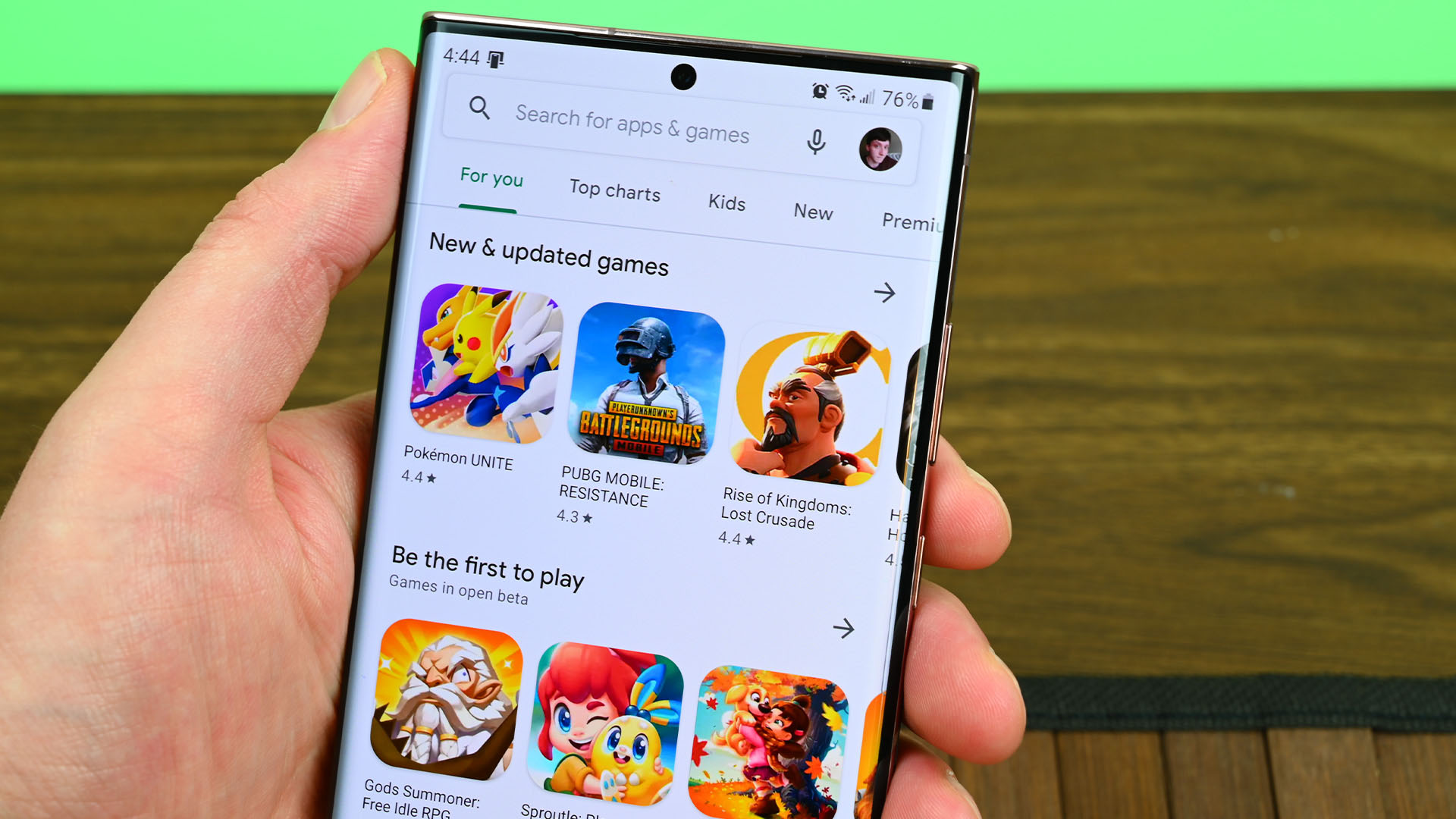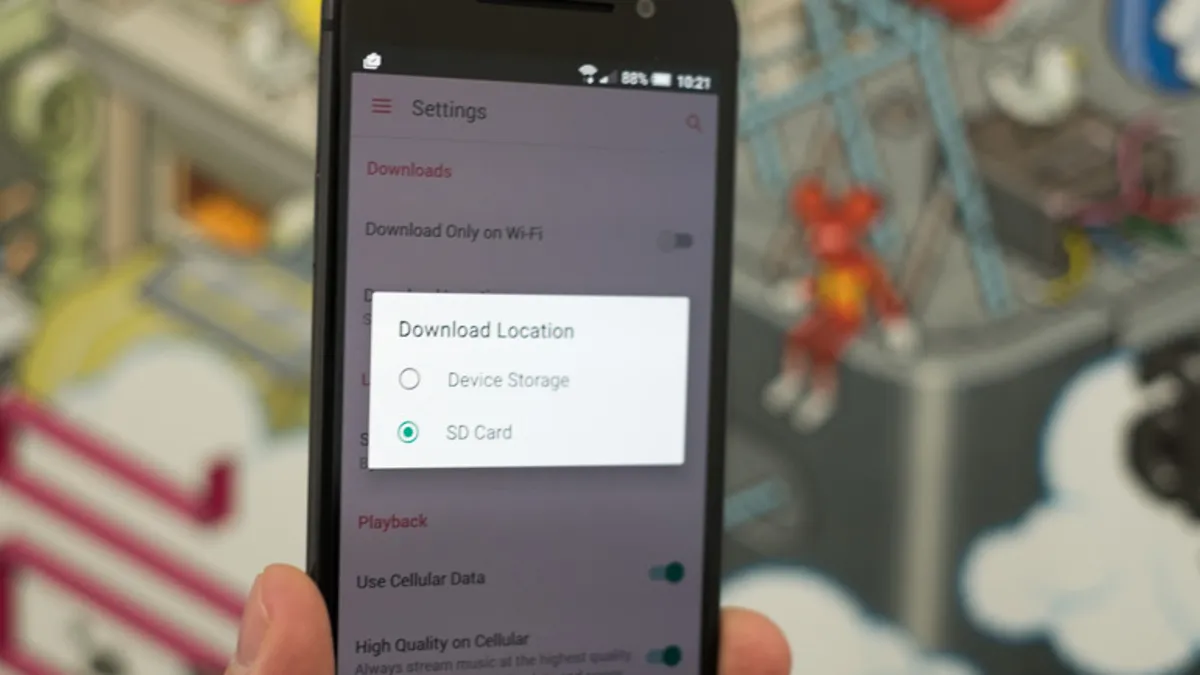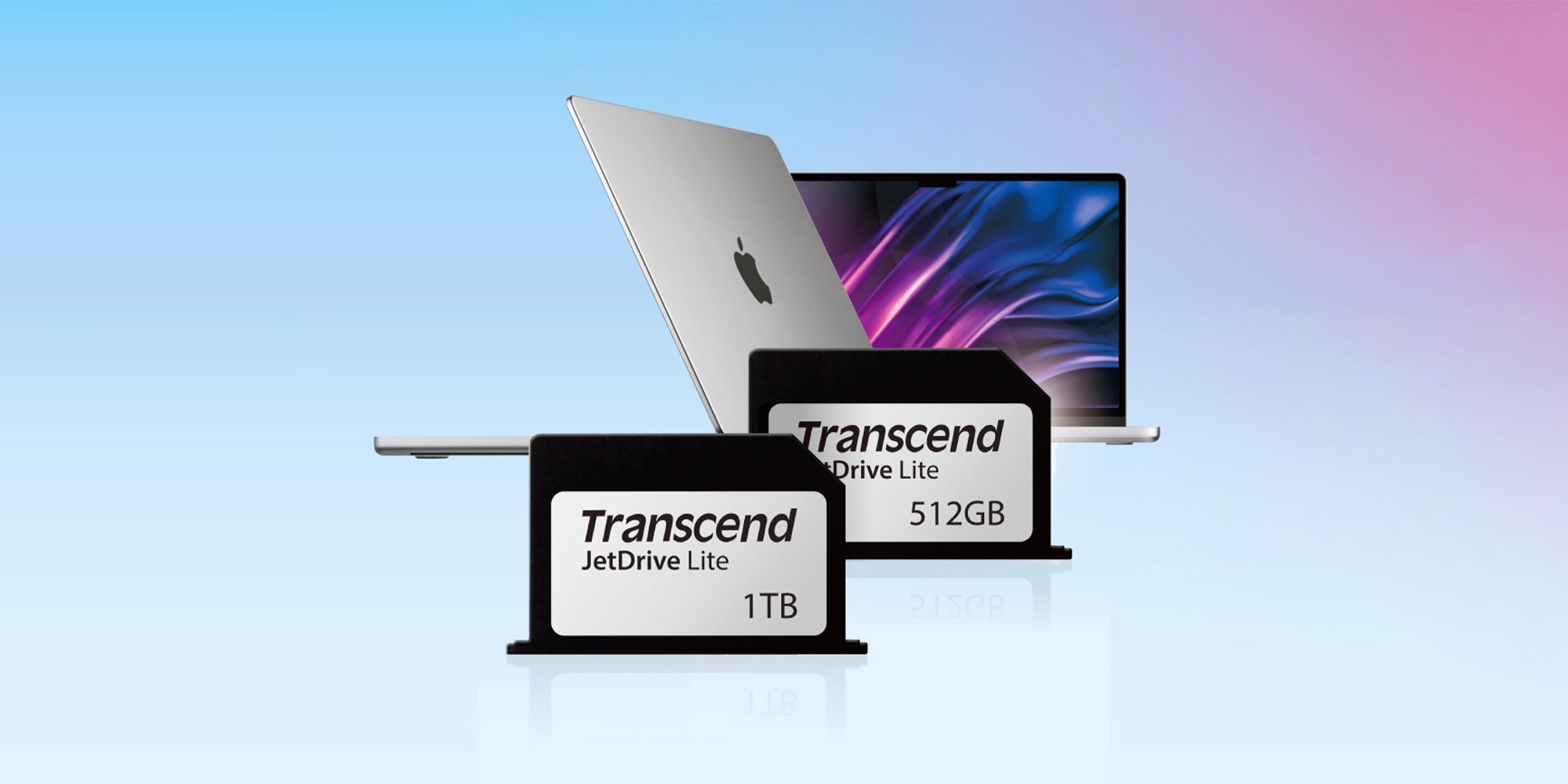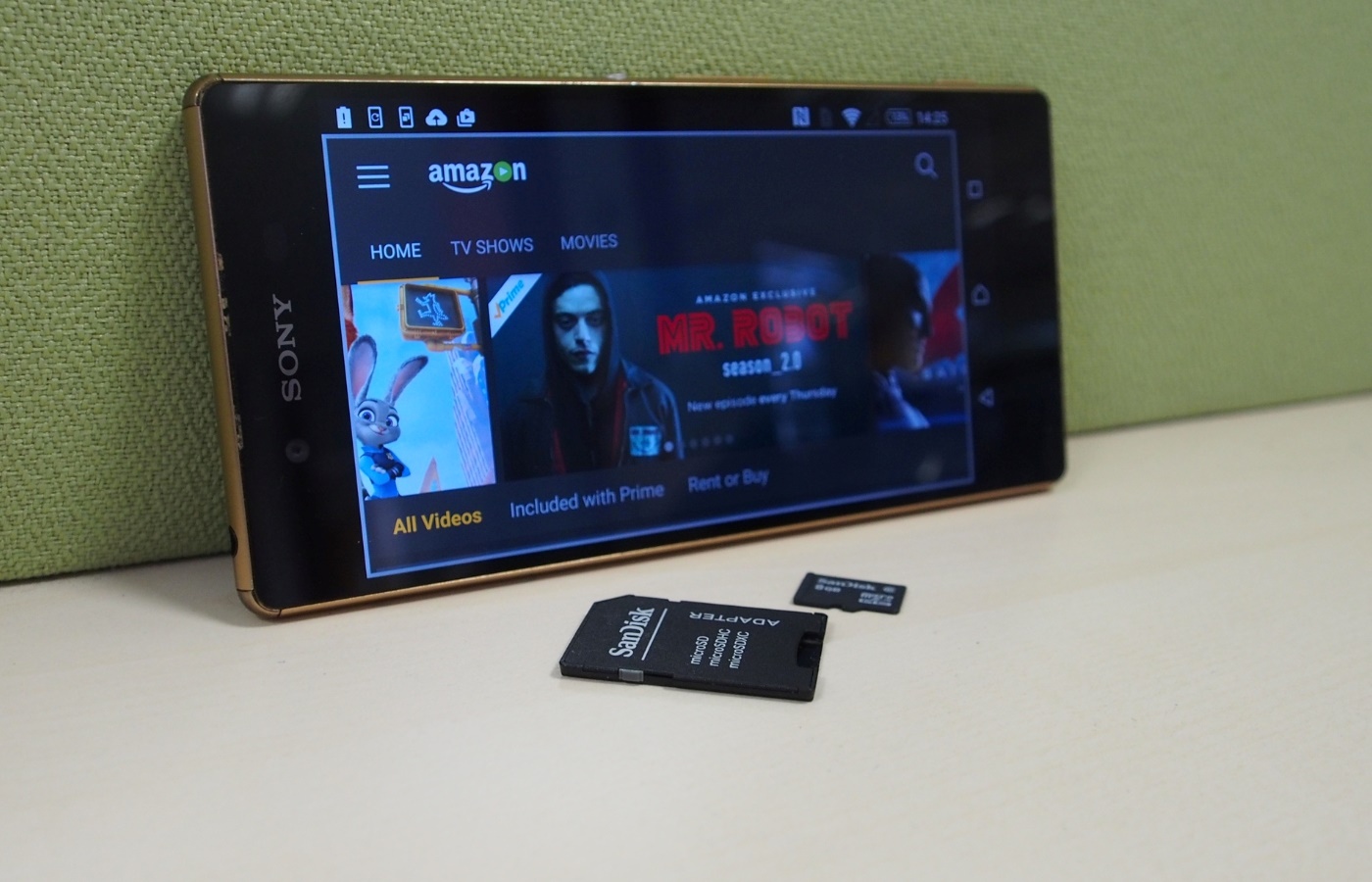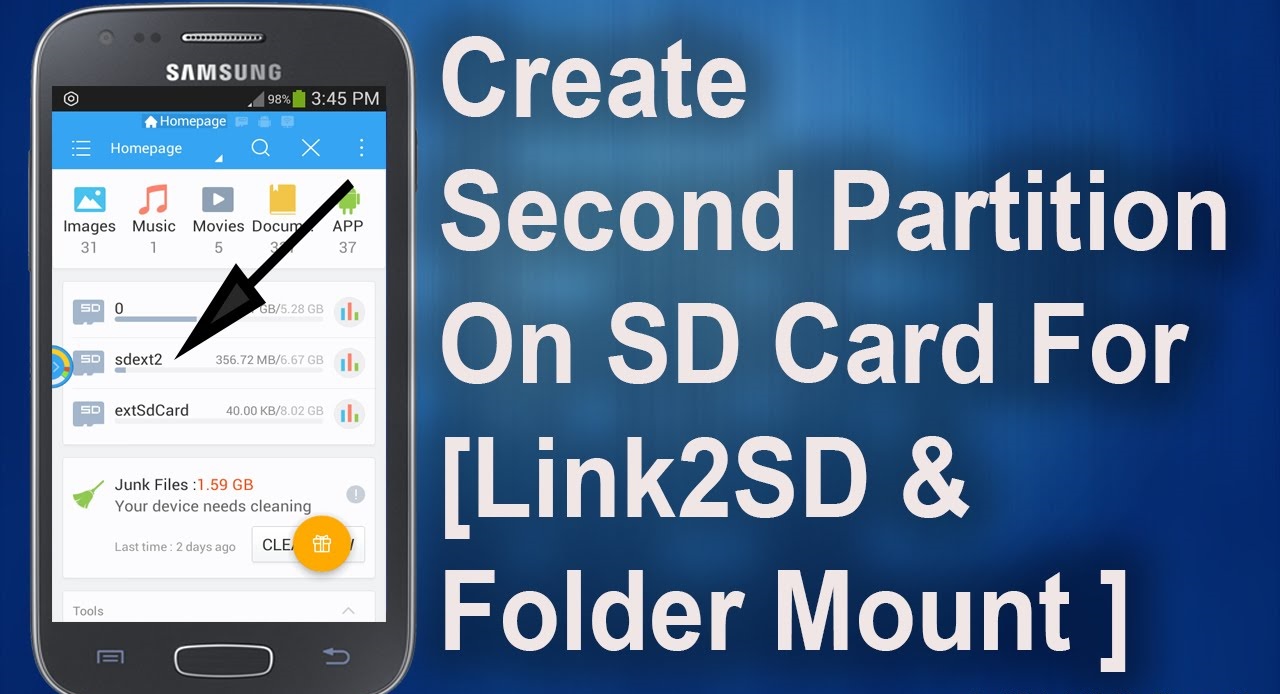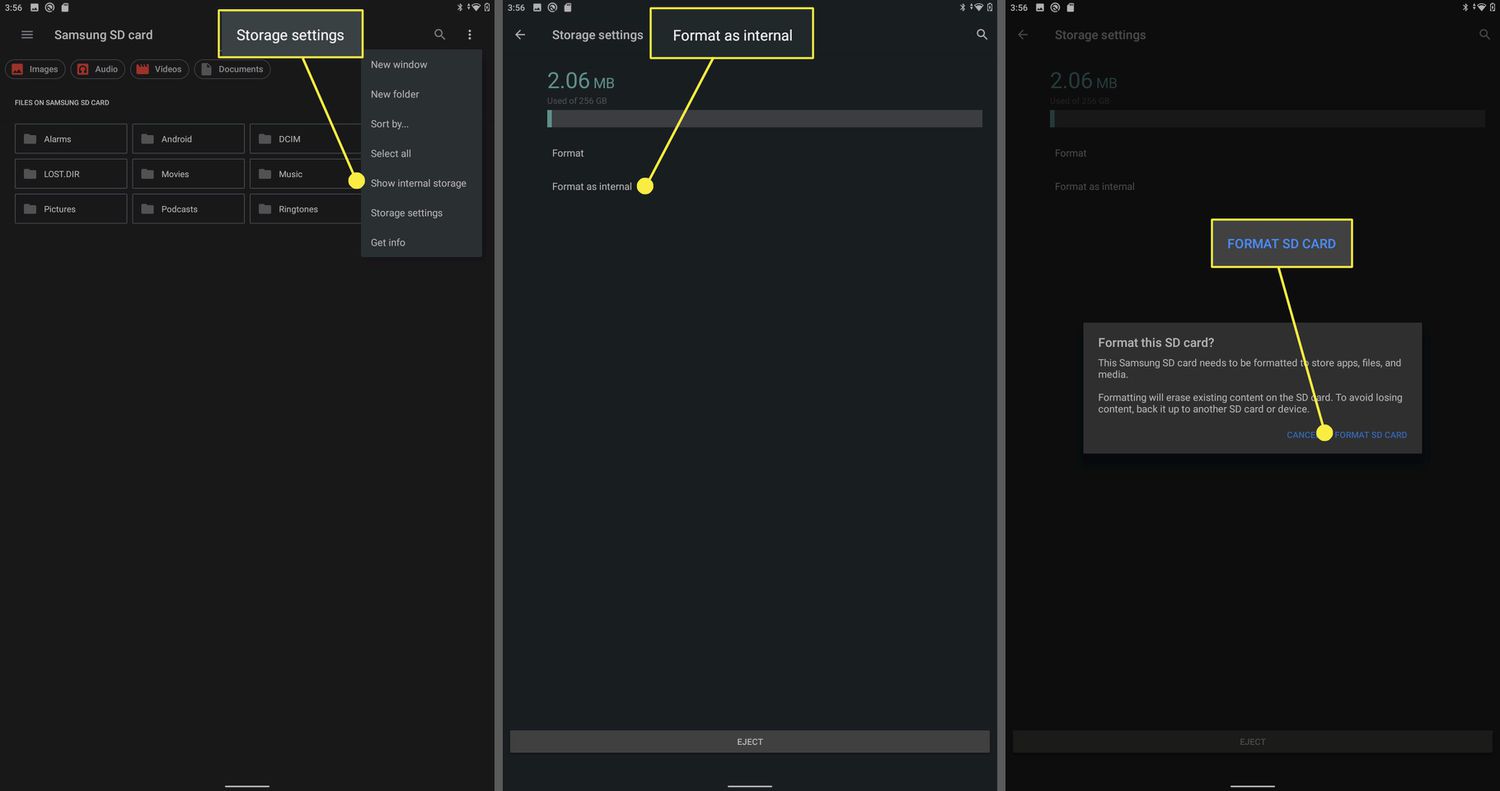Introduction
Downloading apps to an SD card can be a game-changer for those with limited internal storage on their devices. Whether you’re running out of space for photos, videos, or other files, or you simply want to keep your device running smoothly, moving apps to an SD card can significantly improve your device’s performance and storage capacity. In this article, we will explore the benefits of downloading apps to an SD card, check if your device supports this option, learn how to format your SD card for app downloads, change the default storage location, and troubleshoot common issues that may arise along the way.
Many modern smartphones and tablets come with limited internal storage, which can quickly fill up with various apps, games, and media files. This can lead to sluggish performance, frequent notifications about low storage, and the need to constantly delete files or uninstall apps to make room for new ones.
By downloading apps to an SD card, you can free up valuable space on your device’s internal storage, allowing it to run more efficiently. Furthermore, an SD card provides a portable storage solution that allows you to easily transfer your apps and data between devices or expand your storage capacity without investing in a new device.
Before jumping into the process of downloading apps to an SD card, it’s important to check if your device actually supports this feature. While most Android devices offer the ability to move apps to an SD card, some older models or budget devices may have limitations or not support it at all. Checking your device’s specifications or consulting the manufacturer’s documentation will clarify if this option is available.
If your device supports downloading apps to an SD card, the next step is to ensure that your SD card is properly formatted. Formatting the SD card to the correct file system will optimize its performance and compatibility with your device. We will delve into the formatting process and the recommended file system in the following section.
Once your SD card is formatted, you can change the default storage location for app downloads. By doing so, any new apps you install will automatically be saved to the SD card instead of the internal storage. This will ensure that your device’s limited internal storage is preserved for essential system files and other important data.
In addition to changing the default storage location, you can also move already installed apps to the SD card. This can be especially useful for large apps that occupy significant space on your device’s internal storage. We will guide you through the steps to move apps to the SD card, granting you more control over your device’s storage allocation.
Finally, we’ll discuss common issues that may arise when downloading apps to an SD card and provide troubleshooting tips to overcome these challenges. From compatibility issues to error messages, we’ll address possible roadblocks and help you find a solution.
Now that we’ve highlighted the benefits of downloading apps to an SD card and outlined the topics we’ll cover, it’s time to dive into the details. Let’s get started with formatting your SD card for app downloads.
Benefits of downloading apps to an SD card
Downloading apps to an SD card offers several enticing benefits for device users. Let’s explore some of these advantages:
1. Increased storage capacity: The most significant advantage of downloading apps to an SD card is the ability to expand your device’s storage capacity. This is particularly valuable for devices with limited internal storage, such as budget smartphones or older models. By moving apps to an SD card, you can free up space on your device and ensure that it doesn’t become cluttered or sluggish.
2. Efficient management of internal storage: When your device’s internal storage is filled with apps, files, and media, it can affect its performance and responsiveness. By offloading apps to an SD card, you can reserve your device’s internal storage for essential system files and prevent the device from becoming slow or unresponsive.
3. Easy portability between devices: If you switch between devices frequently or often upgrade to a new device, having your apps stored on an SD card makes the transition seamless. Simply insert the SD card into your new device, and you’ll have access to all your downloaded apps without the hassle of re-downloading and setting them up again.
4. Hassle-free storage expansion: Instead of buying a new device with larger internal storage, you can leverage the benefits of an SD card to expand your device’s storage. This is a cost-effective solution, as SD cards are generally more affordable than purchasing a new device with larger internal storage capacity.
5. Convenient transferring of apps: Moving apps to an SD card is also beneficial when you need to transfer apps between devices or share them with others. Instead of relying on slow internet connections or using data to download apps from app stores, you can simply transfer the app from one SD card to another, saving time and data usage.
6. Safekeeping of important apps: Certain apps, such as work-related or productivity apps, are essential for daily operations. By storing them on an SD card, you can ensure that they are preserved if you ever need to reset your device to factory settings or encounter any issues that require a system restore. This way, your important apps and data won’t be lost.
7. Enhanced device performance: With more internal storage available, your device’s performance can be noticeably improved. This is particularly true for devices with lower internal storage capacities, as they can become sluggish and unresponsive when overloaded with apps and files. By moving apps to an SD card, you can enjoy a smoother and faster device experience.
By taking advantage of the benefits mentioned above, downloading apps to an SD card can greatly enhance your device’s functionality, performance, and storage capacity. Now that we understand the advantages of using an SD card for app downloads, let’s delve into how to check if your device supports this feature.
Checking if your device supports downloading apps to an SD card
Before you dive into the process of downloading apps to an SD card, it’s important to ensure that your device actually supports this feature. While most Android devices offer the ability to move apps to an SD card, there may be some older models or budget devices that have limitations or may not support it at all. Here’s how you can check if your device supports downloading apps to an SD card:
1. Check manufacturer documentation: The first step is to consult the manufacturer’s documentation or the device’s user manual. These resources often provide information about the device’s storage capabilities and whether it supports moving apps to an SD card. Look for keywords like “external storage” or “app installation to SD card” to determine if your device has this feature.
2. Check device settings: Another way to check if your device supports downloading apps to an SD card is to explore the device settings. Go to the “Settings” menu on your device and look for an option related to storage or “Applications.” Within the storage settings, you may find a specific setting that allows you to move apps to an SD card. If you see this option, it indicates that your device supports this function.
3. Research online: If you’re still unsure about your device’s capabilities, a quick online search can provide valuable insights. Look for forums, discussion boards, or articles that discuss the specific device model you’re using. Often, fellow device users share their experiences and whether or not the device allows for app downloads to an SD card.
4. Contact customer support: If you’ve exhausted other options and still can’t determine if your device supports downloading apps to an SD card, reaching out to customer support can provide the definitive answer. Contact the device manufacturer’s customer support team through their website or by phone and provide them with your device’s model number and any other relevant information. They will be able to inform you if the feature is supported on your device.
Remember that even if your device supports downloading apps to an SD card, there may be certain limitations or restrictions. For example, some devices only allow you to move specific apps to the SD card, while others may limit the storage capacity for apps on external storage. It’s important to familiarize yourself with these limitations to make informed decisions regarding app downloads and storage management.
Once you have confirmed that your device supports downloading apps to an SD card, you can proceed to the next steps, such as formatting the SD card for app downloads and changing the default storage location. We will explore these processes in the following sections.
Formatting your SD card for app downloads
Before you can start downloading apps to your SD card, it’s important to ensure that the card is properly formatted for optimal performance and compatibility with your device. Here’s a step-by-step guide on how to format your SD card for app downloads:
1. Backup your data: Formatting your SD card will erase all data stored on it. It’s crucial to back up any important files or data before proceeding with the formatting process. You can transfer the data to another device or create a backup on your computer to ensure you don’t lose any valuable information.
2. Insert the SD card: Make sure your device is turned off. Locate the SD card slot on your device and carefully insert the SD card according to the manufacturer’s instructions. Once inserted, power on your device.
3. Access storage settings: Go to the “Settings” menu on your device and look for the “Storage” or “Storage & USB” option. Tap on it to access the storage settings.
4. Locate the SD card: In the storage settings, you should see a section that displays the available storage devices on your device. Look for the SD card option and tap on it to access the SD card settings.
5. Format the SD card: Within the SD card settings, you will find an option to format the SD card. Tap on this option to initiate the formatting process. Confirm your decision when prompted, as formatting will erase all data on the card.
6. Wait for the formatting to complete: The formatting process might take a few moments, depending on the size of the SD card. It’s important not to interrupt this process or remove the SD card until it has completed. Your device will display a notification or a progress bar indicating when the formatting is done.
7. Complete the setup: Once the SD card is formatted, your device will prompt you to complete the setup. Follow the on-screen instructions to finalize the formatting process.
After formatting your SD card, it will be ready for app downloads. Remember that the exact steps may vary slightly depending on your device’s manufacturer and operating system version. It’s always a good idea to consult the manufacturer’s documentation or support resources if you encounter any difficulties during the formatting process.
Now that your SD card is formatted, you can proceed to the next step, which is changing the default storage location for app downloads. This will ensure that any new apps you install will be saved directly to the SD card instead of the internal storage, freeing up valuable space on your device. We will explore this process in the next section.
Changing the default storage location for app downloads
Once you have properly formatted your SD card, you can take advantage of its storage capacity by changing the default storage location for app downloads. By doing so, any new apps you install will be saved directly to the SD card, freeing up valuable space on your device’s internal storage. Here’s how you can change the default storage location for app downloads:
1. Access the device settings: Open the “Settings” menu on your device. The location of this option may vary depending on your device and operating system version.
2. Navigate to the app settings: Look for an option that is related to apps, such as “Apps” or “Applications.” Tap on it to access the app settings.
3. Select the default app installation location: Within the app settings, you should find an option called “App Installation” or “Default Install Location.” Tap on this option to specify the default storage location for app downloads.
4. Choose the SD card as the default location: In the app installation settings, you will have the option to choose between “Internal Storage” or “SD Card.” Select the SD card as the default location for app downloads by tapping on it.
5. Confirm the changes: After selecting the SD card as the default storage location, your device may prompt you to confirm the changes. Follow the on-screen instructions to complete the process.
Once you have changed the default storage location, any new apps you install from the app store will be saved directly to the SD card. However, keep in mind that not all apps can be moved to the SD card, as certain apps and system files may require storage on the device’s internal storage. Additionally, app developers have the option to restrict their apps from being moved to external storage.
If you encounter any issues or inconsistencies with app installations after changing the default storage location, it’s recommended to review the app-specific storage settings. Some apps may have their own storage preferences within their respective settings menus.
By changing the default storage location, you can fully utilize the available space on your SD card and prevent your device’s internal storage from becoming overloaded with apps and files. However, keep in mind that managing your app downloads and storage allocation is an ongoing process. It’s important to regularly monitor your device’s storage, uninstall unused apps, and clear cache and data to keep your device running efficiently.
Now that you have successfully changed the default storage location for app downloads, the next step is to learn how to move already installed apps to the SD card. We will explore this process in the following section.
Moving installed apps to the SD card
If you have apps already installed on your device’s internal storage, you can further optimize your storage usage by moving them to the SD card. Moving installed apps to the SD card can free up valuable internal storage space and ensure a smoother device performance. Here’s how you can move installed apps to the SD card:
1. Access the device settings: Open the “Settings” menu on your device.
2. Navigate to the app settings: Look for an option related to apps, such as “Apps” or “Applications,” and tap on it to access the app settings.
3. Select the app you want to move: Scroll through the list of installed apps and select the one you want to move to the SD card.
4. Tap on “Storage” or “Storage & cache”: Within the app settings, you will find an option called “Storage” or “Storage & cache.” Tap on it to access the storage settings for the selected app.
5. Tap on “Change” or “Storage location”: Look for an option that allows you to change the storage location for the app. This may be labeled as “Change” or “Storage location.” Tap on it to proceed.
6. Select the SD card as the new storage location: In the storage location settings, you will have the option to choose between “Internal storage” and “SD card.” Select the SD card as the new storage location for the app by tapping on it.
7. Confirm the app move: After selecting the SD card as the new storage location, your device may prompt you to confirm the move. Follow the on-screen instructions to complete the process.
Repeat these steps for each app you want to move to the SD card. Keep in mind that not all apps can be moved to external storage, as some apps and system files require storage on the device’s internal memory. Additionally, a small portion of the app may still be stored on the internal storage even after moving it to the SD card.
By moving installed apps to the SD card, you can free up internal storage space for other essential files and apps. This can help improve your device’s performance and prevent it from becoming sluggish due to limited storage capacity. However, be mindful that removing the SD card from your device will render the moved apps inaccessible until the SD card is reinserted.
Now that you’ve learned how to move installed apps to the SD card, you may want to clear app cache and data periodically to further optimize your device’s storage. We will explore this process in the next section.
Clearing app cache and data to free up space on internal storage
Over time, apps accumulate temporary files and data known as cache, which can consume a significant amount of storage space on your device’s internal storage. Clearing app cache and data can help free up space and improve the performance of your device. Here’s how you can clear app cache and data:
1. Access the device settings: Open the “Settings” menu on your device.
2. Navigate to the app settings: Look for an option related to apps or applications, such as “Apps” or “Applications,” and tap on it to access the app settings.
3. Select the app you want to clear cache and data: Scroll through the list of installed apps and select the one you want to clear the cache and data for.
4. Tap on “Storage” or “Storage & cache”: Within the app settings, you will find an option called “Storage” or “Storage & cache.” Tap on it to access the storage settings for the selected app.
5. Clear app cache: Look for the option to clear the app’s cache and tap on it. This will delete all the temporary files and data that the app has stored on your device’s internal storage.
6. Clear app data: If you want to free up even more space and reset the app to its default settings, you can also clear the app’s data. Keep in mind that clearing app data will remove all your personalized settings, accounts, and information associated with the app. Tap on the option to clear the app’s data if you wish to proceed.
7. Confirm the action: After clearing the app cache and/or data, your device may prompt you to confirm the action. Follow the on-screen instructions to complete the process.
Repeat these steps for each app you wish to clear the cache and data for. It’s recommended to periodically clear the cache and data of apps that consume a significant amount of storage or are known to accumulate large cache files.
It’s important to note that clearing app cache and data should be done with caution, as it may impact the app’s functionality or require you to reset your preferences and login credentials. It’s advisable to make note of any important settings or information before proceeding with the cache and data clearing process.
By clearing app cache and data, you can reclaim valuable storage space on your device’s internal storage and potentially improve the performance of your apps. This process can be particularly useful for apps that frequently store large amounts of cache data, such as social media or video streaming apps.
Now that you’ve learned how to clear app cache and data, you have valuable tools for managing your device’s storage effectively. In the next section, we will discuss common issues that may arise when downloading apps to an SD card and provide troubleshooting tips to overcome them.
Troubleshooting common issues with downloading apps to SD card
While downloading apps to an SD card can be a convenient solution to manage storage on your device, there may sometimes be issues that arise. Here are some common issues you may encounter when downloading apps to an SD card and troubleshooting tips to overcome them:
1. App compatibility: Some apps may not be compatible with being moved to external storage. If you encounter an app that cannot be moved to the SD card, it may be due to limitations set by the app developer. In such cases, the best course of action is to keep the app on the internal storage or consider alternative apps that can be moved to the SD card.
2. Insufficient storage: If you’re experiencing difficulties downloading apps to the SD card, it’s possible that the SD card itself does not have enough storage space. Check the available space on the SD card and ensure that it has sufficient capacity to accommodate the apps you wish to download. If necessary, consider upgrading to a larger capacity SD card.
3. SD card formatting issues: If you’re unable to download apps to the SD card or encounter errors during the process, it’s worth checking the formatting of the SD card. Ensure that it is correctly formatted using the recommended file system (typically FAT32 or exFAT). If the SD card is not properly formatted, you may need to reformat it before downloading apps.
4. Permissions and settings: Some devices have settings that restrict app installations to external storage. Check your device’s settings to ensure that app installations to the SD card are allowed. Additionally, review the app-specific permissions to make sure the necessary permissions are granted for accessing and storing data on the SD card.
5. Unmounting or removing the SD card: If you accidentally unmount or remove the SD card while apps are installed on it, you may encounter issues with the apps and their functionality. Make sure to properly eject the SD card before physically removing it from your device to avoid any potential issues.
6. App update limitations: It’s important to note that when apps are updated, they may revert to the default internal storage location. After updating apps, it’s a good practice to check the app settings and verify that they are still set to install new updates on the SD card.
7. Device-specific limitations: Certain device models or manufacturers may have specific limitations when it comes to downloading apps to an SD card. It’s recommended to consult the manufacturer’s documentation or support resources to understand any device-specific restrictions or guidelines.
If you encounter any of these issues, trying the following troubleshooting steps may help resolve them:
– Restart your device: Sometimes, a simple restart can fix temporary issues or glitches that may be affecting app downloads to the SD card.
– Update your device’s software: Ensure that your device’s software is up to date with the latest version. Software updates often include bug fixes and improvements that can address issues affecting app downloads to the SD card.
– Reformat the SD card: If you suspect that the SD card may be causing the issue, you can try reformatting it. Keep in mind that reformatting will delete all data on the card, so be sure to back up any important files before proceeding.
– Clear cache and data: Clearing the cache and data of the affected apps can sometimes resolve issues related to app downloads to the SD card. Follow the steps mentioned in the previous section to clear cache and data for specific apps.
By troubleshooting these common issues and following the recommended steps, you can overcome obstacles and ensure that app downloads to your SD card proceed smoothly. However, if you continue to experience difficulties, it’s advisable to seek further assistance from the device manufacturer’s support team or consult online forums for additional guidance.
Now that we have explored troubleshooting tips for common issues, let’s conclude our article with a recap of the key points discussed.
Conclusion
Downloading apps to an SD card can greatly enhance your device’s storage capacity, performance, and overall user experience. By moving apps to an SD card, you can free up valuable space on your device’s internal storage, efficiently manage your storage allocation, and easily transfer apps between devices. Here’s a summary of the key points discussed in this article:
– Downloading apps to an SD card increases storage capacity, allowing you to keep your device running smoothly without worrying about limited internal storage.
– Before downloading apps to an SD card, ensure that your device supports this feature by checking the manufacturer’s documentation or device settings.
– Formatting your SD card optimizes its performance and compatibility with your device’s operating system.
– Changing the default storage location for app downloads redirects future app installations to the SD card, preserving internal storage for essential files.
– Moving installed apps to the SD card further maximizes storage space on your device’s internal memory.
– Clearing app cache and data frees up additional space on your device and enhances its performance.
– Troubleshooting common issues, such as app compatibility, storage limitations, and formatting problems, can help overcome obstacles in downloading apps to an SD card.
Remember to regularly manage your device’s storage by uninstalling unused apps, clearing cache and data, and periodically evaluating your storage needs. This will ensure that your device continues to run smoothly and efficiently.
By following the guidelines and troubleshooting tips outlined in this article, you can make the most of your device’s storage capacity and optimize its performance. Explore the features and capabilities of your specific device to fully leverage the benefits of downloading apps to an SD card. With a well-managed storage system, you can enjoy a clutter-free device experience and have ample space for all your favorite apps and files.









